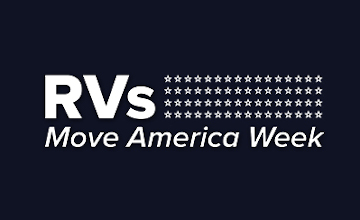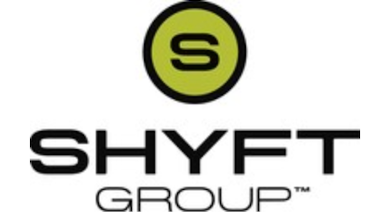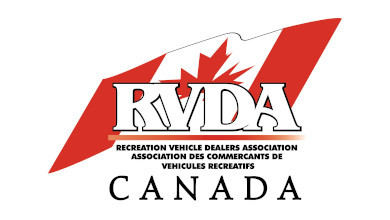A New Era of RVing?
THOR and Winnebago debut electric RV concepts at the Tampa RV SuperShow, possibly signaling the industry’s future.
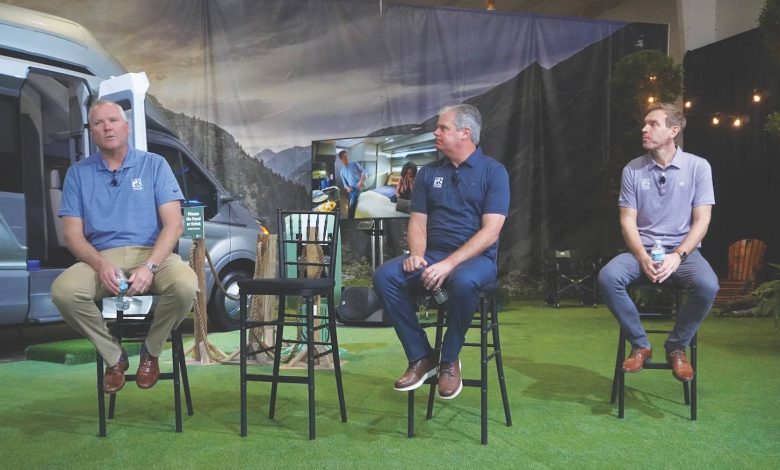
THOR Industries and Winnebago separately debuted what the future of electric-powered RVs may look like at January’s 2022 Florida RV SuperShow. And while representatives for THOR and Winnebago declined to offer a timetable on when these technologies could become road-ready, their debut at a major industry event would seem to indicate the future of electric vehicles may not be as far off as some may have originally anticipated.
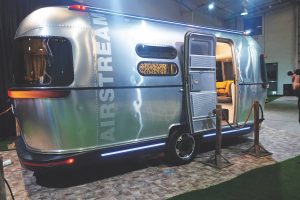
During its invitation-only event, touted as “Adventure. Electrified,” THOR Industries displayed two electric RV concepts: a motorhome and a travel trailer. Presented by THOR’s leadership team, the company said its electric units were specifically designed to create a radical improvement of the RV user experience in an electrified RV world.
THOR President and CEO Bob Martin opened the event for a room full of reporters, analysts, and investors with a big smile on his face.
“There is simply nothing like this in our industry today – at all. Nothing at all,” Martin said simply.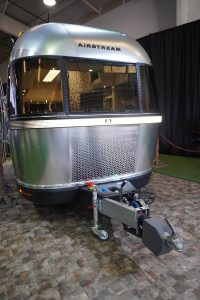
Todd Woelfer, THOR’s senior vice president and COO, gave an overview of how THOR Industries got to where the company is today with this innovative technology – through the company’s Innovative Technology Center.
Literally starting with that blank piece of paper, the company designed these products from the ground up, according to Woelfer.
“This innovation will reshape the industry. This innovation will reshape THOR,” he said.
The Airstream 22-foot travel trailer concept, named eStream, is built on THOR’s exclusive high-voltage electric chassis. Powered by a propriety system, THOR representatives said the trailer dramatically reduces loss of range for electric tow vehicles and improves gas mileage for traditional tow vehicles.
The eStream has two drive motors over the wheels and a sensor at the front that aligns the trailer with the tow vehicle, and it simply follows the car, SUV or truck. In fact, users don’t need a weight distribution hitch with this product, and they can tow it with any vehicle they may have.
As a side benefit, thanks to its drive motors, THOR said the Airstream eStream trailer can be detached and remotely moved around a campsite, which could make maneuvering easier.
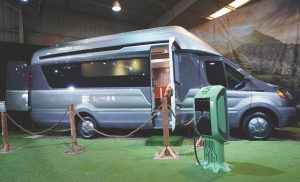
Meanwhile, the Class B motorhome concept, dubbed the Thor Vision Vehicle (TVV), is built on an electric chassis co-developed with Roush. The TVV motorhome includes a number of unique elements designed to maximize chassis performance. Range-extending technologies, including integrated fuel cell components, enable a range of up to 300 miles – well within the average nonstop travel distance of most RV users.
Both the Vision motorhome and the Airstream eStream travel trailer can stay off-grid for a week or more, never needing an electrical hook up or a generator, according to company representatives.
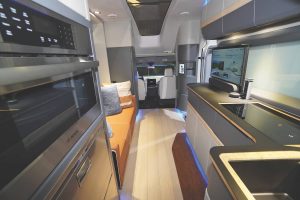
The Vision motorhome has 27 new innovations in the aerodynamic design and function of the product. Built on the Ford Transit 3500 and enhanced fuel cell integration give the coach a best-in-class 300-mile range.
The sleek exterior features rounded corners all around, new front and rear end enhancements, an enclosed 16-foot awning and a custom designed storage system at the rear of the coach that will literally “hang” anything on it. And users can place an electric bike or a kayak inside the coach.
In line with THOR’s sustainability goals, many things on the inside of this trailer are manufactured with recycled materials, such as the countertop, floor and the sofa.
Meanwhile, Martin noted that many of the technologies incorporated into its two concept electric RVs have applications that can be used now to improve conventional RVs.
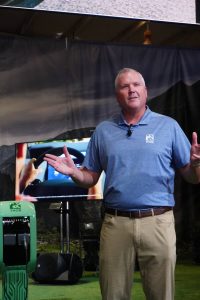
“The exciting thing is that we don’t have to wait for the release of these RVs to take advantage of the innovative technologies we have shown here today,” he said. “If you took the shell of the Vision motorhome and put it on a conventional gas chassis, it would improve fuel mileage by 20 percent. Incorporating the axle along with the exclusive BMW battery packs will regenerate electricity that is transferred to an electric truck or tow vehicle. However, that technology, when coupled with a car, SUV or gas truck, will make the driver feel as if they are not towing anything and allows for independent handling without any vehicle attached to it.”
Winnebago Touts e-RV
For its part, Winnebago Industries unveiled the e-RV motorhome at the Tampa show. The reveal of the all-electric, zero-emissions Class B concept motorhome was two years in the making by the company’s Advanced Technology Group, which is charged with identifying and developing emerging technologies for application within future products and services in the company’s various business units.
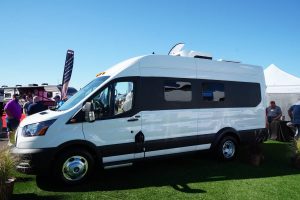
The e-RV is built on the proven on the Ford Transit platform, using the vehicle’s body, chassis and suspension. To power the coach, Winnebago partnered with Loveland, Colo.-based Lightning eMotors, builder of the Lightning Electric Transit passenger van that gets up to 170 miles per charge.
The e-RV is powered by an 86-kilowatt-hour lithium-ion battery pack that Winnebago expects would yield about 125 miles per charge. While that range is limited, Winnebago notes that its research showed that 54 percent of RV owners prefer keeping daily drives “to about 200 miles.”
“This all-electric motorhome concept provides a window into the future of the growing RV market and demonstrates our commitment to developing all-electric options that will contribute to a more sustainable, energy-efficient line of products for our customers,” Ashis Bhattacharya, senior vice president of business development, advanced technology and enterprise marketing at Winnebago Industries, said in prepared remarks following the e-RV’s debut.
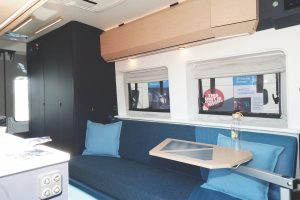
As the technology continues to evolve, Winnebago said it believes the e-RV’s range will continue to increase. For those users who would need to recharge, Winnebago says the e-RV’s pack could be plugged in at home, at a campsite or at a high-speed public charger, where it could be ready to roll again in as little as 45 minutes.
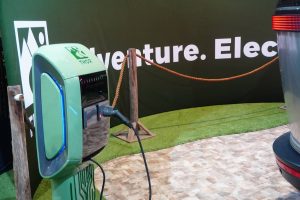
Like THOR’s electric RV concepts, the Winnebago e-RV has environmentally friendly features beyond its powertrain. Specifically, it is equipped with high-efficiency appliances that minimize energy demand and it uses sustainable materials like rubberized cork for flooring and wool to enhance thermal and wall insulation.
Winnebago President and CEO Mike Happe said, “We are proud to continue our innovation legacy with the reveal of the e-RV concept vehicle.”


